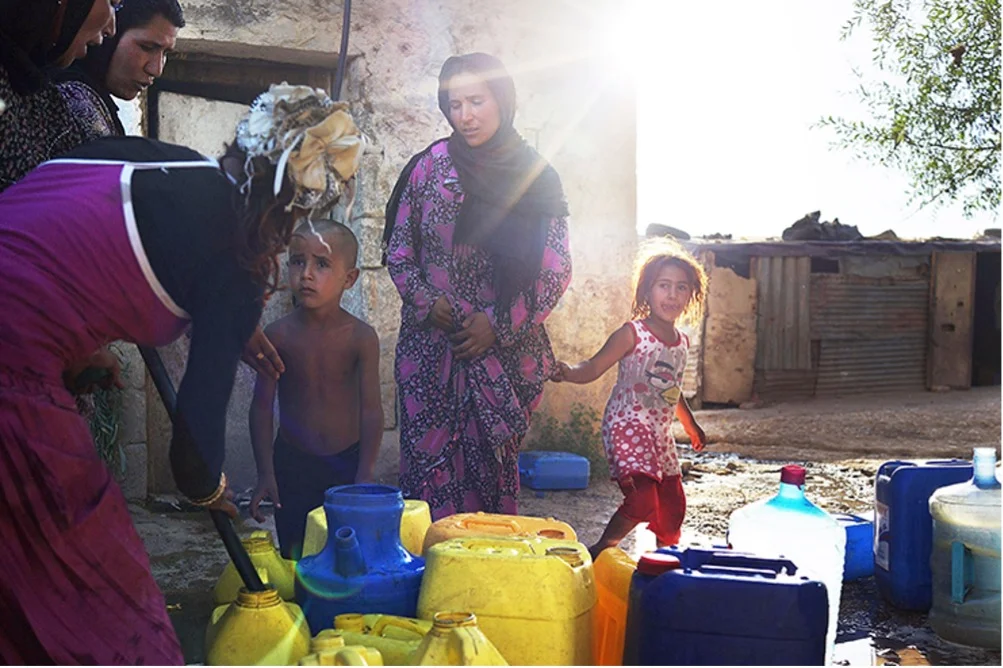Lebanese fashion designer with an eye on sustainable alternatives

The brand’s name underlines the urgent need to shift from the polluting and harmful mass production of fast fashion to a sustainable and ethical alternative to clothing creation.
Producing sustainable fashion that tends for the environment combined with couture that appeals to all ages, races and backgrounds is at the core of the Emergency Room fashion brand created by Lebanese-French designer Eric Ritter.
The brand’s name, which uses the founder’s initials, underlines the urgent need to shift from the polluting and harmful mass production of fast fashion to a sustainable and ethical alternative to clothing creation, Ritter said.
“It is a global trend,” he said. “In different parts of the world there are people who recognise the importance of doing fashion differently, especially when you read about the amount of pollution that is created from producing clothes and hear about the way that fast fashion treats workers, you realise that you cannot build a brand in the same way that everything is being done right now.”
After graduating with a degree in fashion design from Esmod in Beirut, Ritter, 25, worked with renowned Lebanese and French designers in Beirut and Paris.
“But still I was not happy because I thought I was not going to make any difference and I did not want to launch my own brand without finding something special to say,” he said.
Working with an NGO in northern Lebanon that trained underprivileged women in sewing, knitting and embroidery helped Ritter create a clothing brand with a mind of its own.
“I discovered the old souks of Tripoli where there are lots of secondhand cloth shops and many skilled artisans struggling to find work. I also discovered fabric shops that have lots of old stocks not really selling. I thought that something could be done with what is available and decided to launch a new brand that would try to be sustainable,” Ritter said.
Emergency Room uses unique vintage material and dead-stock fabrics, including from curtains, bed sheets, mattresses and secondhand clothes that are locally sourced to create unique pieces providing a conscious and authentic ready-to-wear-line.
All items are produced in local workshops and cooperatives giving skilled local artisans a chance to take part in the process.
“Using these fabrics, deconstructing them and reconstructing them into new garments, make for very unique pieces and designs,” Ritter said.
A year after introducing the brand during which he was selling through pop-up stores, Ritter opened an Emergency Room boutique in Beirut’s hip Mar Mikhael neighbourhood, displaying a colourful summer collection.
Lime green, purple and pink are some of the bright colours used in the collection inspired by an eclectic mix of outfits such as the Japanese kimono, Spanish matador jackets and European trench coats.
A photoshoot campaign Ritter initiated alongside the debut of the boutique, portrayed a wide cast of models who, he said, represented the wide mix of cultures present in Beirut.
“We had 25 models of different ages, body types, gender, sexualities religions and skin colours. We tried to have one person that represents a category of people that you can find in Beirut. Altogether they kind of represent the whole community. In terms of ages, I had my grandmother modelling. She is almost 80,” Ritter said.
When people are hesitant about buying sustainable fashion, Ritter does double effort, telling the whole story behind it.
“We explain about the fashion industry and the harm caused by fast fashion,” he said. “It is very complicated because we have treated fashion in the last couple of decades as disposable, forgetting that clothes are not consumables. These are things that we buy and stay with us until we eventually end up throwing them and they stay on Earth forever and ever. It is important to slow down the whole process.”
Ritter used the event inaugurating his boutique to make a fashion statement. Attendees were asked to pick any piece of second-hand clothing from a shopping basket, grab scissors and cut it in whatever way they like.
“The idea was that with whatever they would be cutting we will be using to create fashion. It was a way of awakening everybody to the fact that it’s OK to use old pieces and to rough them up and that everybody can be part of the design process, that accidents will create nice pieces at the end of the day,” Ritter said.
 Algeria
Algeria Bahrain
Bahrain Comoros
Comoros Djibouti
Djibouti Egypt
Egypt Iraq
Iraq Jordan
Jordan Kuwait
Kuwait Lebanon
Lebanon Libya
Libya Mauritania
Mauritania Morocco
Morocco Oman
Oman Palestine
Palestine Qatar
Qatar Saudi Arabia
Saudi Arabia Somalia
Somalia Sudan
Sudan Syria
Syria Tunisia
Tunisia UAE
UAE Yemen
Yemen




